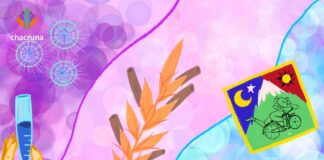Nectar of the Blue Goddess: Consuming Soma in Bengal, India
The question of what ingredients comprise the soma drink of Vedic myth has troubled scholars for centuries. Noting this history, Ian Baker uses this article to reveal a living tradition of Soma consumption in an ancient center of Tantric practice in West Bengal, India.
Psychotropic Drugs from and in the Fields. Rural Roots and Collective...
Ergot is a parasitic fungus that grows on rye and serves as the raw material for lysergic acid (LSD). Through the story of ergot, Beat Bächi shows how the history of LSD is connected to the history of agricultural industrialization and the reorganization of seed breeding in Switzerland.
From Bwiti to Ibogaine and Back: A Transnational History of Tabernanthe...
Julien Bonhomme explores how Euro-American psychedelic communities have appropriated Bwiti ibogaine rituals, creating a liminal experience that incorporates from both traditions. For Western practitioners, ibogaine visions allowed individuals to see through themselves and recreate themselves as they desired in order to overcome their existential problems. While the Gabonese practitioners' visions more often reflected the images of mythical ancestors or relatives practicing witchcraft, rather than mirror-images of themselves.
Remembering to Forget: How the UK Disappeared from the Psychedelic Map
Between 1952 and 1964, the UK's Powick Psychiatric Hospital served as a center of LSD-assisted therapy. Ronald Sandison stood at the center of this activity, publishing papers in psychiatric journals and presenting at conferences, which temporarily brought the UK to the center of therapeutic LSD use. Wendy Kline explains why things changed in the mid-1960s.
From Rubber Adulterant to Ceremonial Psychedelic: Voacanga africana in the Transnational...
Timothy Vilgiate looks at how the story of Voacanga africana is an example of how Western psychedelia co-opts Indigenous culture in order to create fictional "primitive others" that they can utilize for their own agendas. The idea of Voacanga africana as a ceremonial psychedelic ultimately serves less to reflect of African realities, and more to appeal to Western ideas of psychedelics as primordial elements of human mystical experience and spiritual life.
Early Experimental LSD Cultures in the Clinic
Magaly Tornay looks at early practices of meaning-making around LSD in the clinic, a crucial site for negotiating the normal & pathological. Tornay argues that the case of Switzerland is particularly notable in the history of LSD because the drug first found its way into psychiatry through personal connections.
Mescaline, Between Psychopathology and Phenomenology: Sartre and Experimentation in 1930s France
Jean-Paul Sartre’s famous bad trip took place in February 1935, but is it accurate to call it a bad trip when this language didn't exist yet? Gautier Dassonneville shows that Sartre's story fits into a distinct moment in French psycho-philosophy.
Global History of Psychedelics: A Chacruna Series
Our new Chacruna series will highlight the global history of psychedelics. It will highlight some of the dynamic ways that historic traditions, cultures, and research spaces have contributed to the field of psychedelics, as well as raise questions about whose knowledge and expertise has been centered through time.
Conspirituality: The Hidden Face of the Psychedelic Revolution
Glauber Loures de Assis addresses the issue of conspirituality within the psychedelic renaissance and shows how these Western ideas have had an impact on the Global South. He offers ways to move forward that address these issues. He emphasizes the need to counter conspirituality's individualism in order to build a supportive and reciprocal psychedelic community going forward.
Old Uses of Peyote in Traditional Mexican Medicine and its Inclusion...
Starting with Mexico's first National Pharmacopeia in 1846, Nidia Olvera-Hernández traces the long history of peyote in Mexico. She shows how scientific studies throughout the twentieth-century eventually led to prohibition in 1971.














